Tomb 31
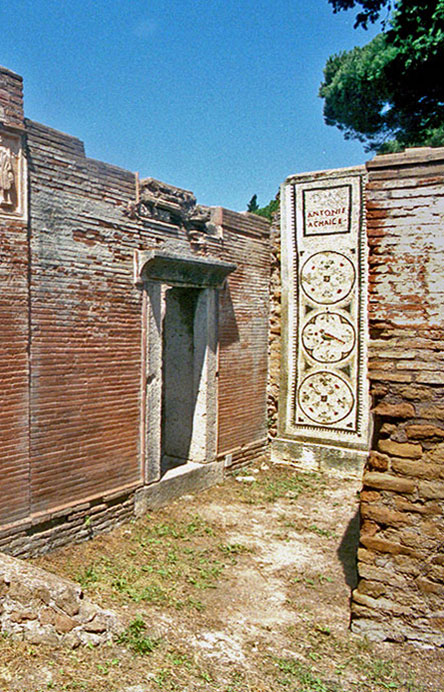
On the right side the back wall of tomb 33.

The façade of tomb 31 is an extension of the façades of tomb 30 and the original burial chamber of tomb 29. The back wall of tomb 31 sticks out a little bit, because the burial chamber of this tomb is deeper than the other two.
The view on the Via Severiana is taken away by the erection in later times of tomb 33. Originally there was a passageway between tomb 31 and 34. This was closed later on.
Tomb 31 had a biclinium too.
Above the entrance the remains of the cornice which once surrounded an inscription are still visible. This inscription, as well as the ceiling, is lost.
The burial chamber differs from the other two of this group. The walls have double rows of arcosolia for inhumation.
In the upper walls, of which only the lower part still exists, were smaller niches1.
Beneath the floor, once covered with a mosaic, formae have been found. On the mosaic floor a part of a Greek name has survived:

In the arcosolia of the back wall and of the entrance wall traces of painted decorations with flowers are visible.
In the arcosolia of both the right and left wall paintings have been found (now in the depots of Ostia). On one of them we see two peacocks, on the other a small column with two birds. The grave dates from the end of the second century AD.

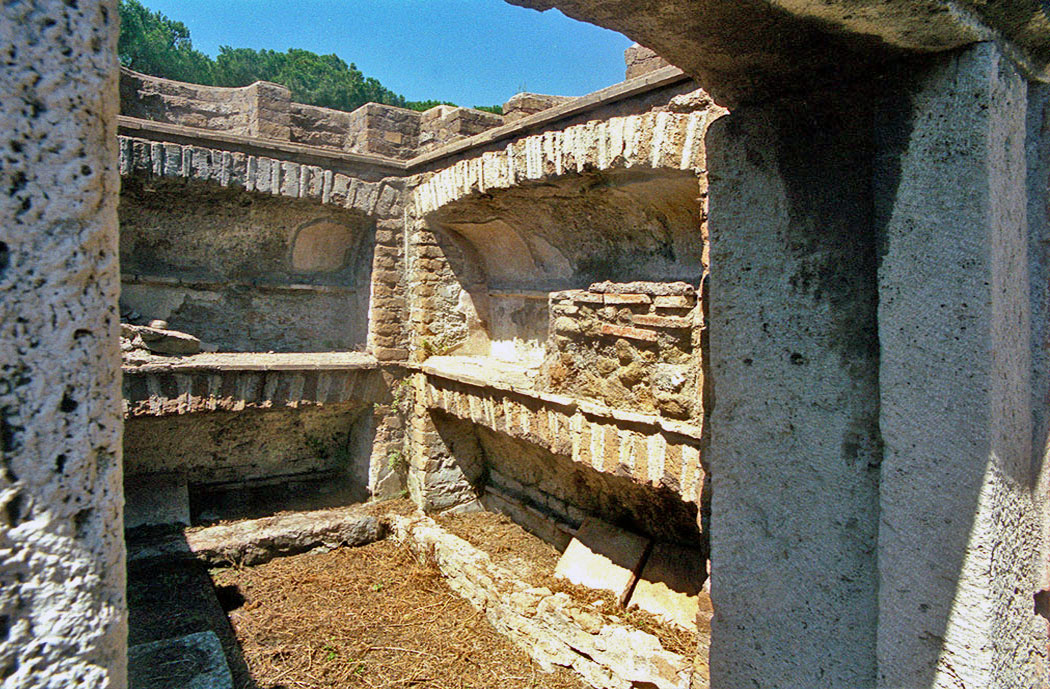
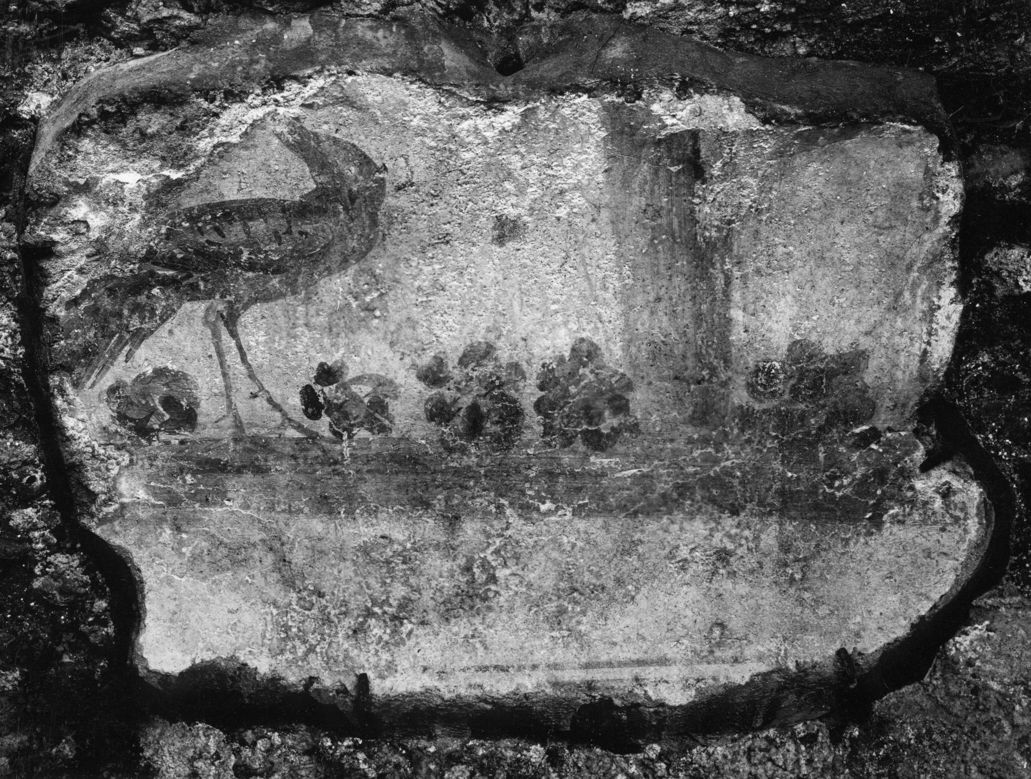
- Sources
- Russel Meigs - Roman Ostia, At the Clarendon Press 1973
- Guido Calza - Necropoli nell'Isola Sacra'(1940)
- Dr. Jan Theo Bakker.
- Hilding Thylander - Inscriptions du port d'Ostie (Lund C W K Gleerup 1952).
- Ida Baldassarre, Irene Bragantini, Chiara Morselli and Franc Taglietti - Necropoli di Porto, Isola Sacra (Roma 1996).
notes- 1:The smaller niches were not used for urns but they had a more symbolical character, according to Ida Baldassarre.- I, Baldassarre, I. Bragantini, Ch. Morselli and F. Taglietti: “Necropoli di Porto” 1996.
Waardeert u ons werk?
Wordt lid van Roman Ports en ontvang het boek of doe een donatie!
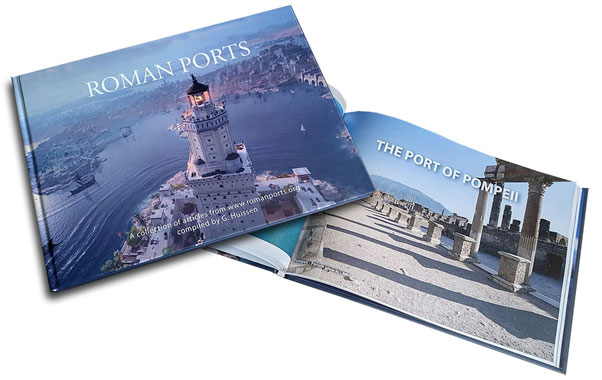 Wordt lid en steun ons
Wordt lid en steun ons
Isola Sacra Index (N)

Speciale sectie over de Romeinse begraafplaats van Portus (Engels)....
Lees meer...De teruggevonden vloot van Pisa

In 1998 werd bij toeval een ongelooflijk archeologisch erfgoed ontdekt in de buurt van het station Pisa San Rossore....
Lees meer...Leptiminus
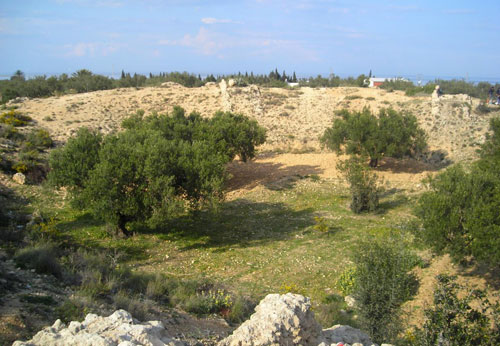
Op de plaats van het huidige Lamta aan de oostkust van Tunesië lag al in de oudheid een havenstad met de naam Leptis Minor ....
Lees meer...Romeins Zeehandelsrecht

Het Romeinse recht is het fraaiste monument dat Rome aan West-Europa heeft nagelaten....
Lees meer...Sullecthum (Salakta)

In de Sahel, in de Tunesische provincie Madhia vinden we aan zee het kleine stadje Salakta....
Lees meer...
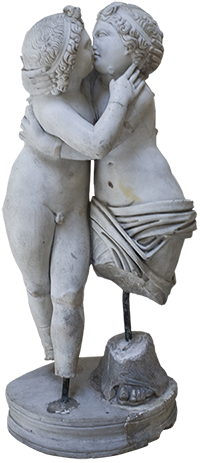 We are committed to providing versions of our articles and interviews in several languages, but our first language is English.
We are committed to providing versions of our articles and interviews in several languages, but our first language is English.